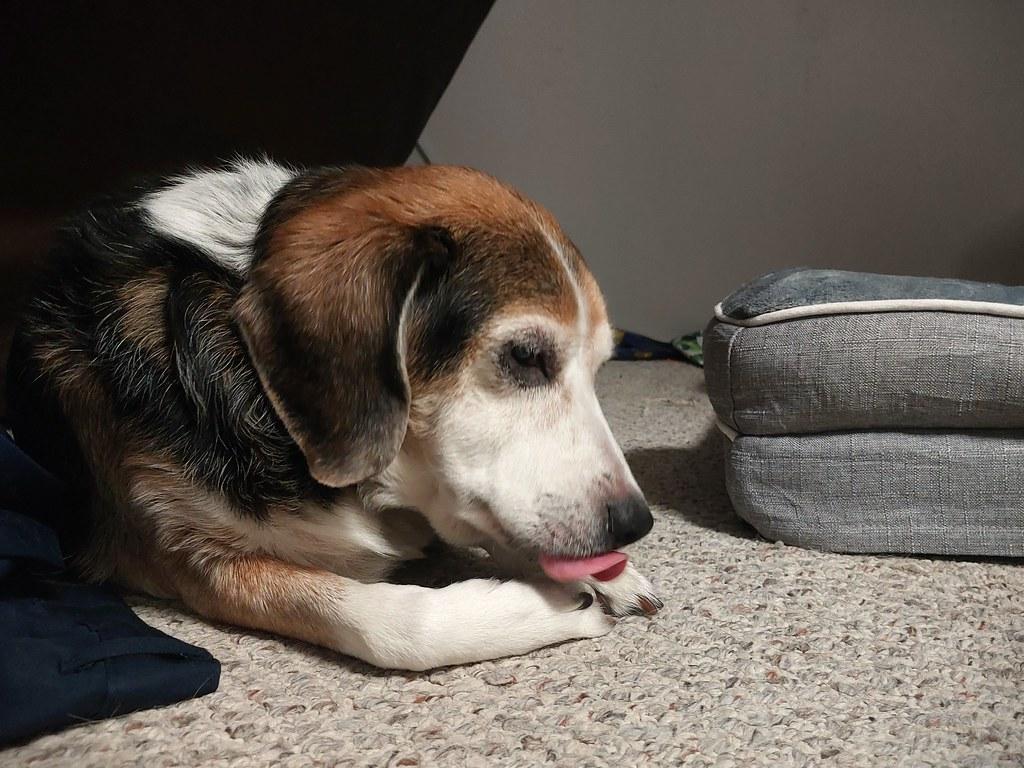Grooming is an essential aspect of pet care, often seen as a bonding activity between dog and owner. It not only keeps our furry companions looking their best but also plays a crucial role in maintaining their overall health. However, for dogs with sensitive skin or existing skin conditions, grooming can sometimes do more harm than good. This article explores how grooming practices can potentially aggravate a dog’s skin conditions and provides guidance on how to ensure that your pet’s grooming routine is both safe and beneficial. With the right knowledge and approach, you can transform grooming into a soothing experience that promotes your dog’s skin health and enhances your special bond.
Understanding the Connection Between Grooming and Skin Health
In the intricate world of canine care, grooming is not just about keeping your dog looking their best. It’s also a vital component of maintaining their overall skin health. However, it’s essential to recognize that improper grooming practices can sometimes exacerbate existing skin conditions. Understanding the delicate balance between grooming and skin health can make a world of difference for your furry friend’s well-being.
Here are some crucial aspects to consider when grooming your dog to ensure it supports their skin health:
- Use the Right Tools: Always choose brushes and combs that are suitable for your dog’s coat type to prevent skin irritation.
- Be Gentle: Excessive pressure or rough handling can damage the skin, especially in breeds with sensitive skin.
- Choose Skin-Friendly Products: Opt for shampoos and conditioners that are specifically formulated for dogs and are free from harsh chemicals.
- Regular Check-Ups: During grooming sessions, keep an eye out for signs of skin issues such as redness, bumps, or dryness, and consult a vet if needed.
- Maintain a Routine: Consistent grooming helps in identifying skin issues early and managing them effectively.
By integrating these practices into your grooming routine, you can help prevent the aggravation of skin conditions and promote a healthy, happy life for your dog.

Identifying Signs of Aggravation During Grooming Sessions
Understanding the subtle and not-so-subtle signals that your dog may exhibit during grooming sessions can be crucial in preventing skin conditions from worsening. Observe your dog’s body language closely. If they show signs of discomfort such as excessive scratching, licking, or biting at certain areas, it might indicate irritation. Additionally, pay attention to changes in their coat or skin texture, like redness or bumps, which can suggest an adverse reaction to grooming products or techniques.
Be on the lookout for these common signs of aggravation:
- Unusual restlessness or pacing during grooming.
- Whining or growling when touched in specific areas.
- Flinching or pulling away from grooming tools.
- Persistent shaking or scratching after the session.
If you notice any of these behaviors, it might be beneficial to consult with a veterinarian to ensure that your grooming routine is suitable for your dog’s specific skin needs. Tailoring your approach based on their feedback can help maintain a positive grooming experience and support healthy skin.

Gentle Grooming Techniques to Soothe Sensitive Skin
When dealing with a dog prone to skin sensitivities, the grooming process should be approached with care and consideration. Opt for soft-bristled brushes that glide gently over the skin, minimizing irritation. It’s crucial to select hypoallergenic shampoos that are free from harsh chemicals and fragrances, ensuring they are specifically formulated for sensitive skin. During the grooming session, maintain a calm environment to help your dog feel at ease, as stress can exacerbate skin issues.
- Use lukewarm water: Extreme temperatures can irritate sensitive skin, so ensure the water is comfortably warm.
- Pat dry instead of rubbing: Gently pat the fur dry with a soft towel to avoid friction that can lead to discomfort.
- Regularly trim fur: Keeping fur at a manageable length helps prevent tangles that could pull at the skin.
Paying attention to the products and techniques used during grooming can make a significant difference in maintaining your dog’s skin health. A gentle touch and thoughtful approach not only soothe sensitive skin but also strengthen the bond between you and your furry friend.

Choosing the Right Products for Your Dogs Skin Condition
Selecting the appropriate products is crucial in managing your dog’s skin condition effectively. Identify your dog’s specific skin needs—whether it’s dryness, irritation, or sensitivity—and choose products that address those issues without exacerbating them. Look for shampoos and conditioners that are hypoallergenic and free from harsh chemicals. Natural ingredients like oatmeal, aloe vera, and chamomile are often gentle and soothing, making them excellent choices for sensitive skin.
When considering grooming tools, opt for brushes and combs that are soft yet effective in removing loose fur and tangles. Avoid tools with sharp bristles that might irritate the skin. Here are a few tips to keep in mind:
– Read labels carefully: Ensure that the product is specifically formulated for dogs with skin issues.
– Consult your vet: Before introducing any new product, a quick consultation can save your dog from potential discomfort.
– Patch test new products: Apply a small amount on a less sensitive area first to check for any adverse reactions.

